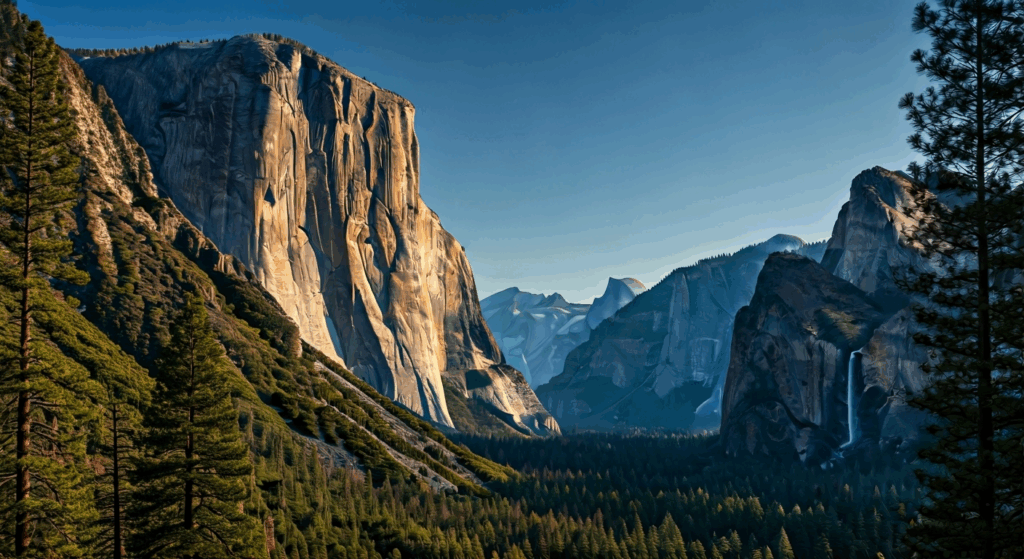Travel Guide to Rome, Italy
Ra's Travel Guide to Rome
The capital of Italy; a complete travel guide to Rome.
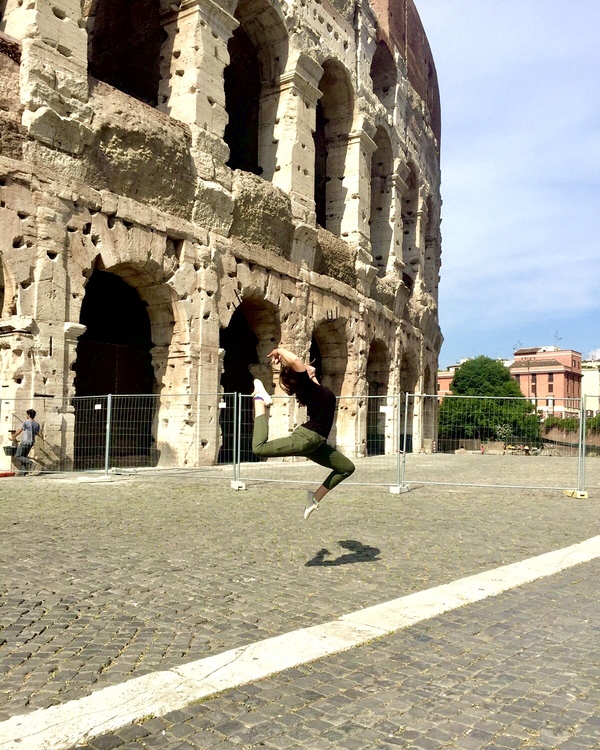
Travel Guide to Milan- Key Highlights
- Explore iconic landmarks like the Colosseum, Trevi Fountain, and Pantheon.
- Immerse yourself in ancient history at the Roman Forum and Palatine Hill.
- Experience the breathtaking art of the Vatican Museums and Sistine Chapel.
- Indulge in delectable Roman cuisine, from traditional pasta dishes to mouthwatering street food.
- Discover hidden gems and local favorites off the beaten path.
- Enjoy the vibrancy of the city's piazzas, like Piazza Navona and Piazza del Popolo.
Introduction- Visit Rome, Italy
Rome, the eternal city and the Italian capital, beckons travelers with its captivating blend of ancient history, stunning art, and vibrant culture. The historic center, a UNESCO World Heritage site, is a treasure trove of iconic landmarks, charming piazzas, and hidden alleyways waiting to be explored. Prepare to be enchanted by the city's timeless allure as you wander through its captivating streets. Use this travel guide to Rome to maximize your time in this timeless city.
Planning Your Trip to Rome
Planning your Roman holiday starts with careful consideration of the best time to visit and an understanding of Rome's weather patterns. These factors can significantly influence your experience, from the crowds you encounter to the activities you can enjoy.
Whether you're seeking pleasant temperatures for sightseeing or wish to witness Rome's charm during a specific season, a little research goes a long way in ensuring a memorable trip.
Deciding the Best Time to Visit
The best time to visit Rome is often during the shoulder seasons, from April to May and September to October. During these months, you'll enjoy pleasant temperatures ideal for exploring outdoor attractions, and the crowds are generally smaller than in the peak summer months.
If you prefer mild weather and don't mind the crowds, April is a wonderful time to experience Rome. The city comes alive with colorful spring blooms, creating a picturesque setting for your adventures.
No matter when you choose to visit Rome, remember that many of the city's most popular attractions draw large crowds. To make the most of your time, consider starting your days early in the morning to beat the queues and enjoy a more tranquil experience.
Understanding Rome's Weather Patterns
Rome generally experiences hot, dry summers and mild, wet winters. Summers, from June to August, can be scorching, with temperatures often reaching the high 80s or even 90s Fahrenheit (30-35 degrees Celsius). During these months, it's essential to stay hydrated and seek shade during the hottest part of the day.
Winters, from December to February, are mild with average temperatures in the 50s Fahrenheit (10-15 degrees Celsius). While rain is more common during these months, it rarely rains for extended periods.
To escape both the midday heat of summer and the potential for afternoon showers during other times of the year, consider planning your sightseeing for the late afternoon and early evening. Rome's weather during these hours can be truly magical.
Preparing for Your Rome Adventure
Before embarking on your Roman adventure, it's crucial to ensure you have all the necessary travel documents and insurance in order. These preparations will provide peace of mind, allowing you to fully enjoy your trip.
Furthermore, take some time to establish a budget for your journey. Rome offers a wide range of options for travelers, from budget-friendly accommodations to luxurious dining experiences.
Essential Travel Documents and Insurance
When traveling to Rome, ensure your passport is valid for at least six months beyond your intended stay. If you're a citizen of a European Union country, Switzerland, Norway, Iceland, or Liechtenstein, you won't need a visa for stays of up to 90 days. Citizens of other countries may require a visa, so it's essential to check the specific requirements based on your nationality.
Travel insurance is highly recommended for any trip abroad. It can protect you against unexpected events such as medical emergencies, baggage loss, or trip cancellation. Be sure to choose a plan that provides sufficient coverage for your needs.
If you're a resident of a European Economic Area (EEA) country or Switzerland, remember to bring your European Health Insurance Card (EHIC). The EHIC grants you access to state-provided healthcare in Italy at a reduced cost, or even for free, should the need arise.
Budgeting for Your Trip
The official currency of Italy is the Euro (€). While Rome can be more expensive than other Italian cities, there are plenty of affordable options available for budget-conscious travelers. Consider dining at trattorias, which offer traditional Roman cuisine at reasonable prices, and explore the city's many free attractions, such as the Pantheon and Piazza Navona.
When planning your budget, factor in accommodation, transportation, meals, attractions, and souvenirs. You can find affordable accommodation options in neighborhoods slightly outside the city center, which are well-connected by public transportation.
Remember that many museums and attractions offer discounted entry on certain days or during specific hours. Take advantage of these opportunities to save money and maximize your budget.
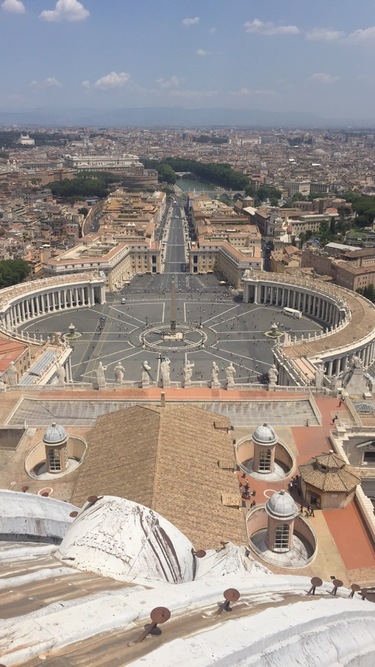
How to Get to Rome
Rome is easily accessible by both air and rail travel, offering visitors flexibility and convenience in planning their journey. Whether you prefer the speed of air travel or the scenic routes offered by train travel, you'll find a mode of transportation that suits your preferences and budget.
Plane
Rome is served by two main airports: Leonardo da Vinci International Airport (Fiumicino) and Ciampino Airport. Fiumicino, located about 30 km from the city center, is the largest and busiest, handling the majority of international flights. It is well-connected to central Rome by the Leonardo Express, a non-stop train that takes around 30 minutes to reach Roma Termini, the city’s main train station. Alternatively, buses and taxis are also available for transport to the city. Ciampino Airport primarily serves budget airlines and is located closer to the city, about 15 km away. Regular buses connect Ciampino to Rome’s metro system, offering a budget-friendly way to reach the city center.
Bus
Long-distance bus services provide an affordable option for traveling to Rome from other cities in Italy and Europe. Companies like FlixBus and Eurolines operate routes connecting Rome to cities such as Florence, Naples, Milan, and even international destinations like Barcelona and Zurich. The main bus terminal in Rome is located at Tiburtina Station, which is connected to the metro and public transportation, allowing for easy access to the city center.
Car
Traveling to Rome by car offers flexibility but comes with the challenge of navigating the city's narrow streets and dealing with parking restrictions. Rome is connected to Italy’s main highway network, including the A1 motorway, which links the city to Florence and Milan to the north and Naples to the south. However, Rome’s ZTL (Zona a Traffico Limitato) restricts vehicle access to the historic center, so visitors are advised to park outside these areas and use public transportation to explore the city. Parking garages and lots are available on the outskirts, allowing drivers to leave their cars and easily access central Rome by metro or bus.
Boat
For travelers arriving by sea, the port of Civitavecchia, located about 80 km from Rome, is the primary gateway for cruise ships and ferries. From Civitavecchia, regular trains run to Rome, with a travel time of about one hour to Roma Termini station. The port also serves ferries from destinations like Sardinia and Corsica, making it a convenient entry point for visitors coming from the Mediterranean islands. Taxis and shuttle services are also available for direct transportation into the city.
Train
Rome’s main train station, Roma Termini, is one of the largest and busiest in Europe, making the city easily accessible by train from other parts of Italy and Europe. High-speed trains operated by Trenitalia and Italo offer frequent connections from cities like Florence, Milan, Naples, and Venice. International trains from destinations such as Paris, Munich, and Vienna also arrive at Roma Termini. Once in Rome, the train station is centrally located, with easy access to the metro, buses, and taxis to explore the city.
When I visited Rome, I was traveling from Munich, Germany, and opted for the more budget-friendly and scenic route by train. We were able to travel with all of our luggage and group in a private compartment on our train without any issues. When choosing your travel route, I recommend checking with Rome2Rio to get an idea about your travel time and the cost. Rome2Rio link.
Where to Stay in Rome?
From luxurious hotels to cozy apartments, Rome offers a diverse range of accommodation options to suit every taste and budget. Whether you prefer staying in the heart of the action or in a quieter neighborhood with local charm, you'll find a comfortable and welcoming place to call home during your Roman holiday.
When choosing where to stay, consider your budget, desired level of comfort, and proximity to attractions. Central Rome provides easy access to most landmarks but tends to be more expensive, while neighborhoods slightly outside the center offer more affordable options with convenient transportation links.
Choosing Between Hotels and Apartments
Hotels in Rome cater to a variety of preferences, from budget-friendly options to luxurious five-star establishments. Many hotels, especially those in central Rome, offer amenities like breakfast buffets, rooftop terraces, and swimming pools. If you value convenience, comfort, and a range of services, a hotel might be the perfect choice for you.
Apartments provide a home-away-from-home experience, offering more space and freedom than traditional hotels. With amenities like kitchens or kitchenettes, you'll have the option of preparing your meals, which can be a cost-effective alternative to dining out for every meal. Apartments are an excellent choice for families, groups of friends, or travelers seeking a more independent experience.
Ultimately, the best choice between a hotel and an apartment depends on your individual needs and travel style. Consider your budget, desired level of privacy, and preference for amenities when making your decision.
Areas Recommended for First-Time Visitors
For first-time visitors, staying in central Rome offers unparalleled convenience and access to major attractions. The area around Piazza Navona is a popular choice, with its vibrant atmosphere, stunning Baroque architecture, and proximity to landmarks like the Pantheon and Trevi Fountain.
Another excellent option is the area surrounding the Spanish Steps, known for its upscale boutiques, charming cafes, and elegant atmosphere. From here, you can easily explore the Trevi Fountain, the Borghese Gallery, and the charming streets of the surrounding neighborhood.
For a more authentic Roman experience, consider staying in the charming neighborhood of Trastevere. Located across the Tiber River, Trastevere offers a bohemian vibe with its narrow cobblestone streets, ivy-covered buildings, and lively trattorias.
When I visited Rome, I opted for a small hotel close to the city center. The price was a little higher, due to the location, but it made it easier to get around all of the places that I wanted to visit without having to consistently pay for public transportation. However, the downside was there was no AC which was a little difficult to manage during the hot summer months. However, this just forced me to go out and explore the city and interact with the cafe culture.
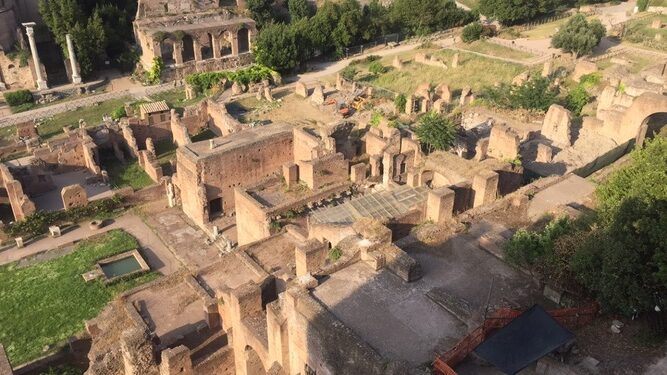
Guides to Italy
How to Get Around Milan
Metro
Rome’s metro system is a quick and efficient way to get around the city, especially for visiting major tourist attractions. With three lines—Line A, Line B, and Line C—the metro connects key areas such as the Colosseum, Vatican City, and Spanish Steps. Trains run frequently from early morning until late at night, and tickets are affordable and easy to purchase at stations or via mobile apps. While the metro doesn’t cover every part of the city, it’s a great option for reaching central and well-touristed areas.
Trams
Rome’s tram system is another convenient way to explore the city, with modern trams serving several key routes. While the tram network isn’t as widespread as the bus or metro systems, it connects some popular tourist areas, including Piazza Venezia and Trastevere. Trams offer a scenic way to travel and are typically less crowded than buses. Tickets are integrated with the metro and buses, allowing for easy transfers between these modes of transport.
Bus
Rome’s bus network is extensive, covering areas that the metro doesn’t reach. With hundreds of routes crisscrossing the city, buses can take you to residential neighborhoods, parks, and attractions like Villa Borghese or Trastevere. While buses are a slower mode of transport due to Rome’s frequent traffic, they are essential for areas beyond the reach of the metro. Tickets for buses are the same as for the metro and can be purchased at tobacco shops, newsstands, or metro stations. Some buses run 24/7, making them a reliable option for late-night travel.
Taxi
Taxis are widely available in Rome, with taxi stands located near major tourist attractions, train stations, and airports. Taxis are metered, but fares can be high compared to public transportation. They are a good option for late-night trips or when traveling with luggage. Ride-sharing services like Uber are also available in Rome, though they may be less prevalent than traditional taxis. Booking via app makes ride-sharing a convenient choice, especially for travelers preferring a set fare in advance.
Walking
Rome’s historic center is best explored on foot. Many of the city's most iconic landmarks, such as the Pantheon, Trevi Fountain, and Piazza Navona, are located close to each other, making walking an enjoyable and practical way to see the sights. Rome’s narrow streets and piazzas are filled with history, and walking allows you to discover hidden gems and soak in the city’s atmosphere. Be sure to wear comfortable shoes, as the city’s cobblestone streets can be challenging.
Cycling
Although not as popular as walking, cycling is becoming more common in Rome, with bike rental services and dedicated bike lanes available in some areas. Bike-sharing systems like Roma Bike offer a convenient way to rent bikes for short trips around the city. While central Rome’s narrow streets and heavy traffic can make cycling a challenge, it’s a great option for exploring parks like Villa Borghese or the quieter neighborhoods outside the historic center.
Scooters and Motorbikes
For a true Roman experience, many locals get around the city using scooters or motorbikes. Visitors can also rent scooters through services like eCooltra or Scooterino. Scooters offer a quick and flexible way to navigate the city’s traffic and narrow streets, but it’s important to have prior experience and confidence riding in busy urban areas. Helmets are mandatory, and scooters are a practical way to explore parts of the city that are harder to reach by public transport.
What to Do in Rome, Italy
Embark on an unforgettable journey through time as you explore Rome's iconic landmarks. From the grandeur of ancient Rome to the architectural masterpieces of the Renaissance and Baroque periods, Rome's historical treasures will leave you breathless.
To make the most of your sightseeing adventures, ensure you have comfortable walking shoes and a reliable map. With these essentials in hand, you're ready to uncover the city's captivating past and create lasting memories.
Colosseum
No trip to Rome is complete without visiting the iconic Colosseum, one of the most famous landmarks in the world. This ancient amphitheater, built in 70-80 AD, once hosted gladiator battles and public spectacles. Today, it's a must-see attraction, offering a glimpse into Rome's rich history and architecture. Be sure to explore the underground chambers and upper levels for breathtaking views of the Roman Forum and beyond. To avoid long lines, it’s recommended to book Colosseum skip-the-line tickets or join a guided tour for an in-depth experience.
Vatican City and St. Peter’s Basilica
As the heart of the Catholic Church, Vatican City is one of Rome’s top attractions. Visitors flock here to admire the awe-inspiring St. Peter’s Basilica, one of the largest and most beautiful churches in the world. Don’t miss the chance to climb to the top of the dome for panoramic views of Rome, or explore the Vatican Museums, home to masterpieces like the Sistine Chapel painted by Michelangelo. Booking a Vatican guided tour or early access tickets is highly recommended to make the most of your visit.
Trevi Fountain
The Trevi Fountain is not only one of the most beautiful fountains in the world but also a symbol of Rome. According to tradition, throwing a coin into the fountain ensures you’ll return to Rome one day. Built in the 18th century, the Baroque fountain features intricate sculptures and is especially stunning when illuminated at night. Located in the heart of the city, the Trevi Fountain is surrounded by charming streets filled with shops, cafes, and gelaterias, making it a perfect stop during a Rome city tour.
Pantheon
The Pantheon is one of the best-preserved ancient Roman buildings and a true architectural marvel. Originally built as a temple to all gods, it has been a Christian church since the 7th century. Its massive dome, with a central oculus that lets in natural light, is a remarkable feat of engineering and design. Entrance to the Pantheon is free, and it’s located in the lively Piazza della Rotonda, surrounded by cafes and restaurants, making it a great spot to relax after a day of sightseeing. Be sure to visit early in the morning to avoid crowds.
Trastevere
For a taste of authentic Roman life, take a stroll through the charming neighborhood of Trastevere. Known for its narrow cobblestone streets, colorful buildings, and vibrant nightlife, Trastevere offers a more laid-back vibe compared to the bustling city center. During the day, explore its artisan shops and hidden churches, such as the beautiful Basilica di Santa Maria in Trastevere. In the evening, the neighborhood comes alive with lively bars, trattorias, and pizzerias, making it one of the best places in Rome to enjoy a traditional Italian meal.
Spanish Steps
The Spanish Steps, with their elegant design and stunning views, are a favorite spot for both tourists and locals. Located in the heart of Rome near Piazza di Spagna, the steps lead up to the Trinità dei Monti church and offer a perfect vantage point for people-watching. The surrounding area is known for its luxury shopping streets like Via dei Condotti, home to high-end fashion brands. After exploring the Spanish Steps, relax at Piazza di Spagna or grab a gelato from a nearby shop and enjoy the vibrant atmosphere.
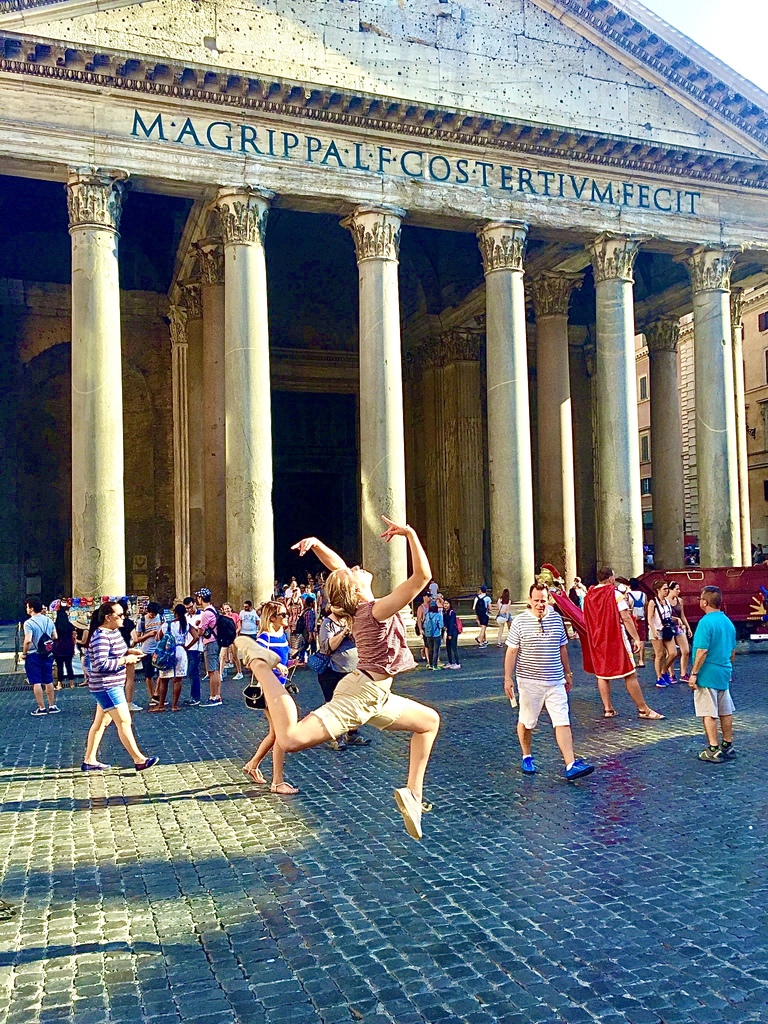
Borghese Gallery and Gardens
Art lovers shouldn’t miss the Borghese Gallery, one of Rome’s most prestigious art museums, located in the stunning Villa Borghese Park. The gallery houses masterpieces by renowned artists such as Caravaggio, Bernini, Raphael, and Titian. The surrounding gardens offer a peaceful retreat from the bustling city, with beautiful walking paths, fountains, and sculptures. Renting a bike or boat in the park is a popular way to explore the area. Be sure to book your Borghese Gallery tickets in advance, as entry is limited to small groups at specific time slots.
Appian Way
The ancient Appian Way (Via Appia Antica) is one of Rome’s oldest and most important roads, once used by the Roman military. Today, it's a peaceful, scenic route lined with ancient tombs, ruins, and aqueducts, offering a unique glimpse into Rome’s history. Walking or biking along the Appian Way is a great way to escape the city’s hustle and explore a quieter, more historical side of Rome. Don’t miss visiting the Catacombs of San Callisto or San Sebastiano, ancient underground burial sites that add to the historical intrigue of this ancient road.
Piazza Navona
Piazza Navona is one of Rome’s most famous squares, known for its Baroque architecture, lively atmosphere, and stunning fountains. The centerpiece is Bernini’s Fountain of the Four Rivers, surrounded by charming cafes, restaurants, and street performers. The square was once a Roman stadium and retains its oval shape, adding to its unique charm. Piazza Navona is an ideal spot for a leisurely afternoon, whether you’re enjoying a coffee, admiring local artists, or simply people-watching. Its central location also makes it a perfect stop while exploring nearby attractions like the Pantheon and Campo de’ Fiori.
Capitoline Museums
For a deep dive into Roman history and art, visit the Capitoline Museums, the world’s oldest public museum. Located on Capitoline Hill, the museums feature an extensive collection of ancient Roman statues, Renaissance art, and artifacts from Rome’s rich history. Highlights include the Capitoline Wolf, a famous sculpture symbolizing the myth of Romulus and Remus, and Michelangelo’s Piazza del Campidoglio, an architectural masterpiece. The museums also offer stunning panoramic views of the Roman Forum, making them a must-see for history buffs and art enthusiasts alike.
Safety and Etiquette Tips
While Rome is generally a safe city for travelers, it's essential to be aware of your surroundings and take precautions to protect yourself from petty crime, particularly in crowded tourist areas. By following basic safety tips, you can minimize risks and ensure a worry-free trip.
Respecting local customs and etiquette demonstrates cultural sensitivity and fosters positive interactions with locals. Familiarize yourself with basic Italian phrases and customs to enhance your travel experience.
Staying Safe: Practical Advice for Travelers
Be aware of your surroundings, especially in crowded tourist areas, as pickpocketing can be an issue. Keep your valuables secure, preferably in a money belt or inside pocket. Avoid carrying large amounts of cash and be cautious when using ATMs.
If you plan to drive in Rome, familiarize yourself with local traffic laws and regulations. Traffic in the city center can be chaotic, and parking can be scarce and expensive.
In case of an emergency, dial 112, the European emergency number, which will connect you to the appropriate emergency service (police, ambulance, or fire department). It's also a good idea to keep a copy of your passport and important documents separate from the originals.
Conclusion
Rome, with its rich history and vibrant culture, offers a plethora of experiences for travelers. From exploring iconic landmarks like the Colosseum to savoring authentic Roman cuisine, every moment in this ancient city is enchanting. Planning your trip meticulously, from choosing the right time to visit to navigating public transportation, ensures a smooth and memorable journey. This travel guide to Rome will help make sure your trip goes smoothly. Embrace the local customs, indulge in hidden gems, and immerse yourself in the beauty of Rome beyond the tourist spots. Remember to respect cultural norms and prioritize safety during your travels to make the most of this enchanting destination. So pack your bags, and get ready to create unforgettable memories in the Eternal City!
Frequently Asked Questions
How Many Day Do I Need to Visit Rome?
To fully explore Rome's best places, plan for at least 3-4 days. However, you can easily spend a week or more discovering its hidden gems and experiencing the city beyond its iconic landmarks. For those short on time, a well-planned day trip from nearby cities offers a taste of Rome's highlights, especially if you focus on the historic city center.
What Are the Must-Visit Sights for a First-Timer?
For first-time visitors to Rome, the must-visit sights include the Colosseum, Vatican Museums (including the Sistine Chapel), Roman Forum, Trevi Fountain, and Pantheon. These iconic landmarks offer a glimpse into the city's rich history, art, and culture.
Can I Drink Tap Water in Rome?
Yes, tap water in Rome is safe to drink. Rome's tap water is sourced from natural springs and undergoes rigorous treatment. You can refill your water bottles from the numerous public fountains, known as "nasoni," scattered throughout the city.
What is the Best Way to Avoid Crowds at Popular Landmarks?
The best way to avoid crowds at popular landmarks in Rome is to visit early in the morning or later in the afternoon. Consider purchasing skip-the-line tickets in advance to minimize waiting times, especially during peak season.
Travel Tip
Be aware of pickpockets and crime in Rome as they have been increasing significantly over the past few years. Practice travel safety and be aware of your things and your surroundings.
My Playlist for Rome, Italy
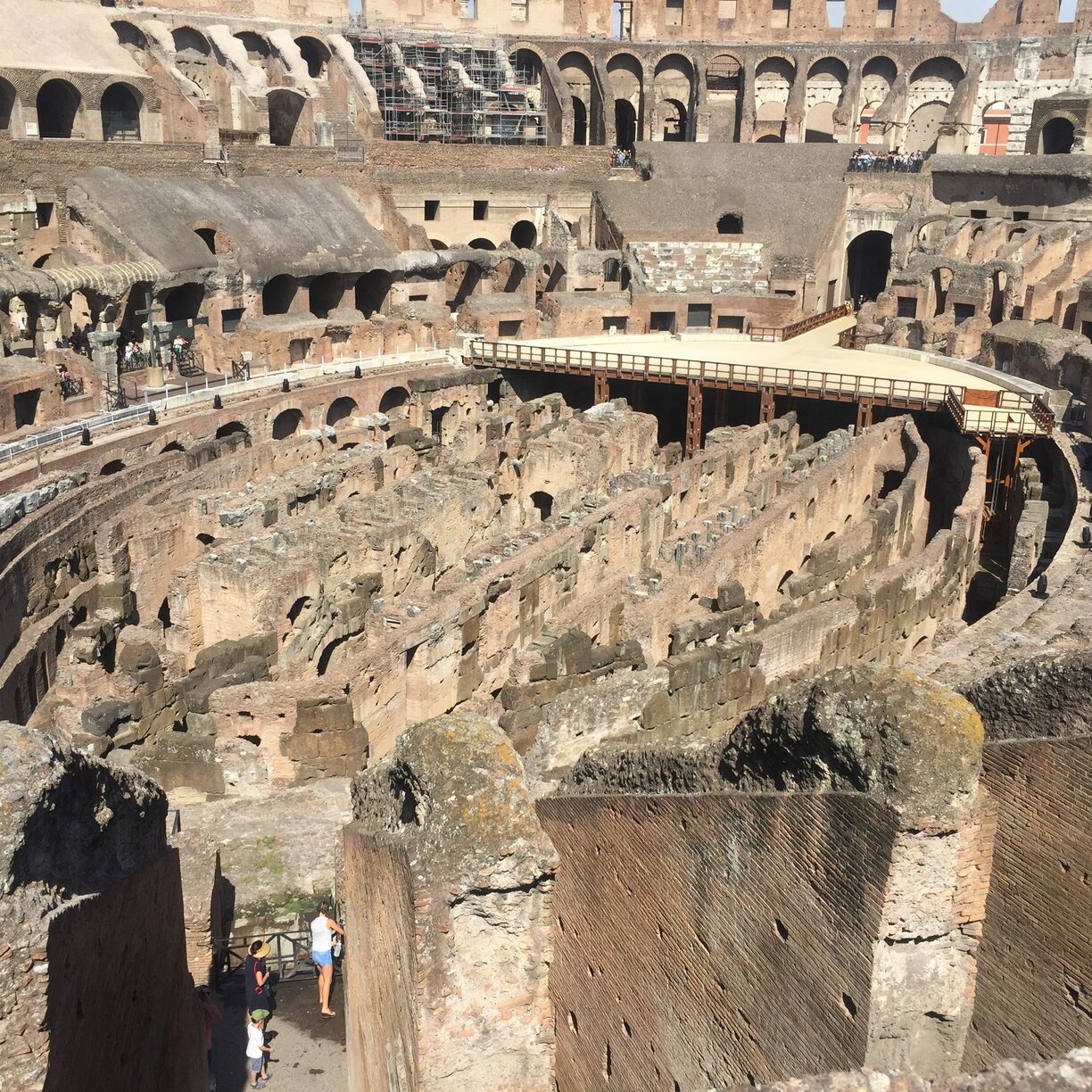

Recommended Reads
Explore Yosemite National Park: A Nature Lover’s Paradise
Key Highlights Next, let’s dive into what makes Yosemite National Park an unmatched treasure of the United…
Local Favorites: What Food to Eat in California
Key Highlights Introduction California, also called the golden state, is a great place for people who love…
Discover the 20 Best Places to Visit in California Now
Key Highlights Introduction California is a place that has something for everyone. You can find natural beauty…

